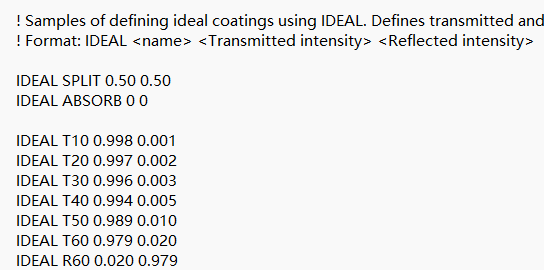The definition statement of IDEAL coatings is as follows,
Syntax: IDEAL <name> T R TIR
Here the transmittance and reflectivity of the ideal coating are defined. I tried to define several ideal coatings and then performed polarization ray tracing. The analysis results showed that the transmittance analysis was reasonable, but compared with the actual coating, the polarization pupil diagram was not significantly different.

I would like to know whether OpticStusio considers polarization issues for ideal coatings. How are the transmission coefficient and reflection coefficient calculated when performing polarized ray tracing? Are there any regulations?



